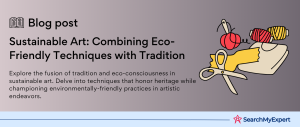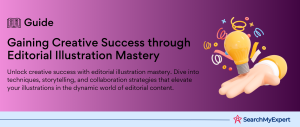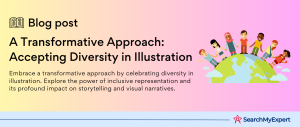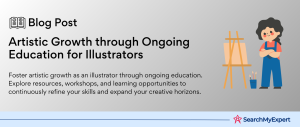Sustainable Practices in Illustration
Defining Sustainable Illustration
Sustainable illustration isn’t just a buzzword; it’s a transformative approach in the art world. At its core, sustainable illustration intertwines the principles of environmental consciousness with the creative process of illustrating. This concept extends beyond the mere use of eco-friendly materials. It encompasses the entire lifecycle of an illustration – from concept to creation, and eventually, to its impact on the environment and society.
Why Sustainability in Illustration Matters
In the traditional realm of illustration, numerous environmental and ethical challenges surface. These range from the production and disposal of art materials, which often contain harmful chemicals, to the energy-intensive processes involved in digital illustration. As artists, embracing sustainability is more than an ethical choice; it’s a necessity. It’s about being mindful of our environmental footprint and striving to create art that doesn’t just speak to the present but safeguards the future. By adopting sustainable practices, illustrators can lead a wave of change, influencing not only the art community but also the broader audience to think and act green.
Rethinking Materials in Sustainable Illustration
Reducing and Reusing: Smart Material Management
In sustainable illustration, the principle of “reduce and reuse” is paramount. Here’s how artists are actualizing this:
- Choosing Recycled Paper:
Artists like Anna Brown opt for 100% post-consumer waste paper. This choice significantly lowers the ecological footprint by saving trees and reducing landfill waste. - Repurposing Objects:
New York-based artist Tom Fruin uses discarded items like plastic bottles and scrap metal to create stunning installations, turning waste into art. - Canvas Reuse: Contemporary painters, such as Emma Low, frequently repurpose old canvases, layering new works over previous ones, reducing waste and adding depth to their art.
Embracing Eco-friendly Alternatives
Switching to greener materials is a game-changer:
- Natural Pigments: Artists like John Sabraw collaborate with scientists to create pigments from polluted riverbeds, turning environmental cleanup into art supplies.
- Vegetable-based Binders:
Eco-conscious artists are adopting binders made from natural oils, reducing the reliance on chemical solvents. - Soy-based Inks: In graphic illustration, professionals are shifting towards soy-based inks for their lower environmental impact and excellent print quality.
Supporting Sustainable Brands: Making Ethical Choices
Selecting the right brands is crucial for sustainability:
- Hahnemühle:
This company produces high-quality papers with a focus on sustainability, like their Bamboo range made from 90% bamboo fibers. - Natural Earth Paint: Known for their eco-friendly pigments and paints, they offer artists a palette that’s both beautiful and benign to the planet.
- Asoyia: A leader in soy-based inks, Asoyia’s products are used by illustrators seeking sustainable printing options.
By rethinking our material choices and supporting companies that prioritize the planet, artists can make a significant impact on both the art world and the environment.
Digital Sustainability in Illustration
Embracing a Paperless Workflow
The digital revolution in illustration isn’t just about innovation; it’s a pathway to sustainability. Here’s why:
- Reducing Paper Waste:
Digital illustration negates the need for physical materials like paper and paint, dramatically cutting down on waste. - Energy Efficiency: Advanced software and hardware are increasingly energy-efficient, minimizing the carbon footprint of digital art creation.
- Accessibility and Versatility: Digital tools offer unlimited creative freedom without the environmental cost of traditional materials.
Cloud Solutions: Eco-friendly Archiving and Collaboration
Cloud storage isn’t just a convenience; it’s an eco-conscious choice:
- Reduced Physical Storage: By storing artwork digitally, artists significantly reduce the need for physical storage solutions, saving space and resources.
- Collaboration Without Boundaries: Cloud platforms enable artists to collaborate remotely, reducing travel-related carbon emissions.
- Energy Efficient Data Centers:
Many cloud service providers are committing to renewable energy and more efficient data centers, aligning with sustainable practices.
Choosing Green Hosting for Digital Artwork
Your online portfolio can be green too:
- Understanding Green Hosting:
Sustainable web hosting providers use renewable energy sources, ensuring your digital presence is environmentally friendly. - Reducing Digital Carbon Footprint: By choosing a green host, artists ensure that their online portfolios and digital storage contribute less to carbon emissions.
- Supporting Sustainable Practices: Opting for eco-friendly hosting companies encourages more providers to adopt green practices.
Digital illustration, when approached with sustainability in mind, offers a promising avenue for artists to create without compromising the planet’s health.
Sustainable Studio Practices
Conserving Energy in the Studio
An eco-friendly art studio starts with energy conservation. Here’s how:
- Maximizing Natural Light:
Utilizing daylight not only saves energy but also provides the best lighting for creating art. - Energy-Efficient Appliances:
Opt for LED lighting, Energy Star-rated devices, and efficient heating/cooling systems to reduce energy consumption. - Sustainable Power Sources: Where possible, integrating solar panels or choosing green energy providers can significantly lower a studio’s carbon footprint.
Waste Management: Responsible Disposal and Recycling
Proper waste management is key to a sustainable studio:
- Recycling Systems:
Set up dedicated bins for recycling paper, plastics, and metals commonly used in art materials. - Responsible Disposal: For waste that can’t be recycled, like certain paints and chemicals, seek out proper disposal methods to minimize environmental harm.
- Minimizing Waste:
Adopt practices that reduce waste, like using digital previews before printing and repurposing materials wherever possible.
Mindful Cleaning: Non-toxic and Eco-friendly Methods
A healthy studio environment is vital:
- Choosing Non-toxic Cleaners: Use natural, biodegradable cleaning products to avoid harmful chemicals.
- Eco-friendly Practices:
Implementing practices like using reusable cloths instead of disposable paper towels contributes to a cleaner, greener studio space. - Healthy Air Quality:
Ensure good ventilation, especially when working with potentially harmful substances, and consider air-purifying plants for additional benefits.
Adopting these sustainable practices can transform any art studio into an environmentally responsible space, conducive to both creativity and the well-being of our planet.
The Power of the Message in Sustainable Illustration
Raising Awareness Through Art
Illustrations hold immense power in communicating complex environmental and social issues. Here’s how artists are making an impact:
- Conveying Sustainability: Through their work, illustrators can depict the beauty of nature, the impact of pollution, and the importance of conservation, striking a chord with viewers.
- Educational Illustrations: Artistic representations of environmental concepts can be potent tools for education, raising awareness about sustainability in an engaging way.
Collaborations & Platforms: Amplifying the Message
Strategic collaborations can amplify the reach and impact of sustainable illustrations:
- Partnering with Eco-organizations:
Teaming up with environmental groups or NGOs can help illustrators reach a wider, more engaged audience. - Utilizing Digital Platforms:
Social media and online galleries dedicated to sustainability provide a vast platform for artists to share their work and message.
Art as Activism: Illustrators Making a Difference
Many illustrators have embraced their role as activists, using their art to inspire change:
- Spotlight on Real-life Activists:
Artists like Jody Thomas have captured global attention with murals that feature young environmental activists, amplifying their message. - Environmental Campaigns: Illustrations have played a crucial role in campaigns for wildlife protection, ocean conservation, and climate action.
By harnessing their talent and platform, illustrators have the unique opportunity to not only create beautiful art but to inspire meaningful change in the world.
Beyond the Studio: Extending Sustainability into Life
Sustainable Living for Artists
Artists can extend their eco-conscious values beyond the studio. Here’s how:
- Eco-friendly Lifestyle Choices:
Opting for sustainable transportation, energy-efficient homes, and a plant-based diet can significantly reduce one’s carbon footprint. - Mindful Consumption: Embracing minimalism, buying local, and choosing sustainable products in everyday life echo the principles of sustainable art.
- Reducing, Reusing, Recycling: Applying these principles in daily activities can make a substantial environmental impact.
Community Engagement: Inspiring Collective Action
Artists can be catalysts for broader sustainability:
- Workshops and Events:
Conducting workshops on sustainable art practices can educate and inspire others. - Exhibitions with a Cause: Hosting or participating in art shows focused on environmental themes can spread the message further.
- Social Media Advocacy:
Leveraging online platforms to showcase sustainable practices and tips encourages others to join the movement.
Advocating for Change in the Art Industry
Driving sustainable practices industry-wide is crucial:
- Collaboration with Art Institutions:
Partnering with galleries, schools, and organizations to adopt and promote green practices. - Influencing Supply Chains: Advocating for eco-friendly materials and ethical manufacturing processes in art supplies.
- Policy Advocacy:
Engaging with policy-making to support sustainable initiatives in the arts sector.
By adopting sustainable practices in every aspect of their lives, artists can make a profound impact, inspiring change within their communities and the broader art industry.
Envisioning a Sustainable Future in Illustration
The Growing Momentum of Sustainable Illustration
The movement towards sustainable illustration is gaining ground. It’s not just a trend but a necessary shift towards a more responsible art world. This paradigm is not only about minimizing negative impact but also about creating a positive influence on both the environment and society. As technology evolves and awareness grows, sustainable practices in illustration hold immense potential for promoting ecological balance and ethical responsibility.
Empowering Artists in the Sustainable Journey
Every artist plays a pivotal role in this movement. Individual choices, whether it’s opting for eco-friendly materials, embracing digital tools, or advocating for environmental causes, collectively shape a powerful narrative. The art community’s collective efforts can lead to significant changes in how the industry operates and how the public perceives environmental responsibility.
A Call to Action for a Greener Future
We encourage you, the reader, to explore the realm of sustainable illustration. Whether you’re an artist, a collector, or an art enthusiast, your involvement matters. Experiment with sustainable practices, share your journey, and join the growing community advocating for a greener future in illustration. Together, we can create an art world that not only reflects our creativity but also our commitment to preserving our planet.
Conclusion
The shift towards sustainable illustration is more than a trend; it’s a necessary evolution in the art world. As this movement grows, artists are uniquely positioned to make a significant impact through their choices and creative expressions. By embracing eco-friendly practices, digital innovations, and community engagement, illustrators can lead the way toward a more sustainable and ethically responsible future. We encourage everyone in the art community to explore, adopt, and advocate for sustainable methods, joining the collective effort for a greener future in illustration.
Let our Illustrators Company bring your ideas to life.
Table of Contents
Toggle






